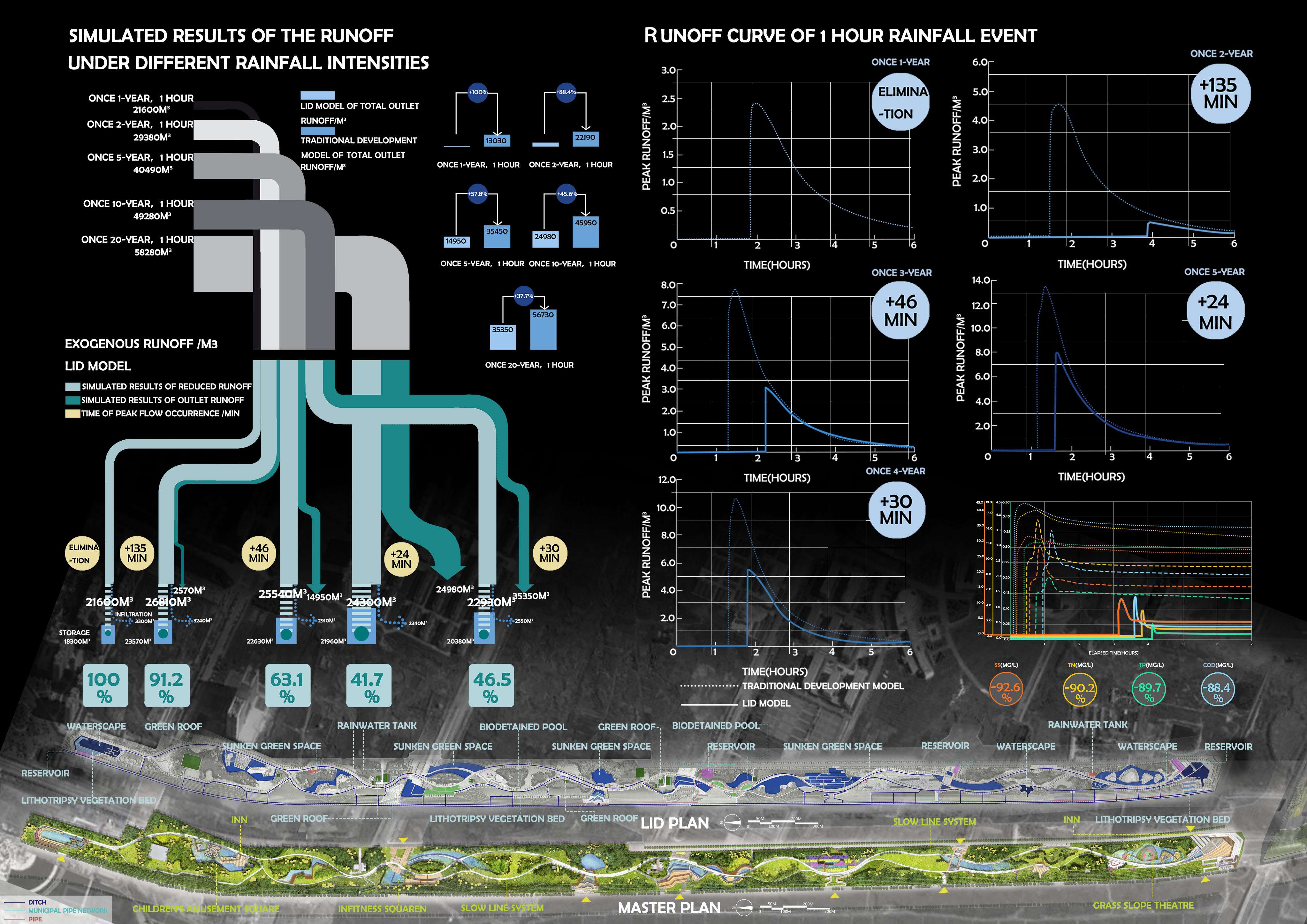
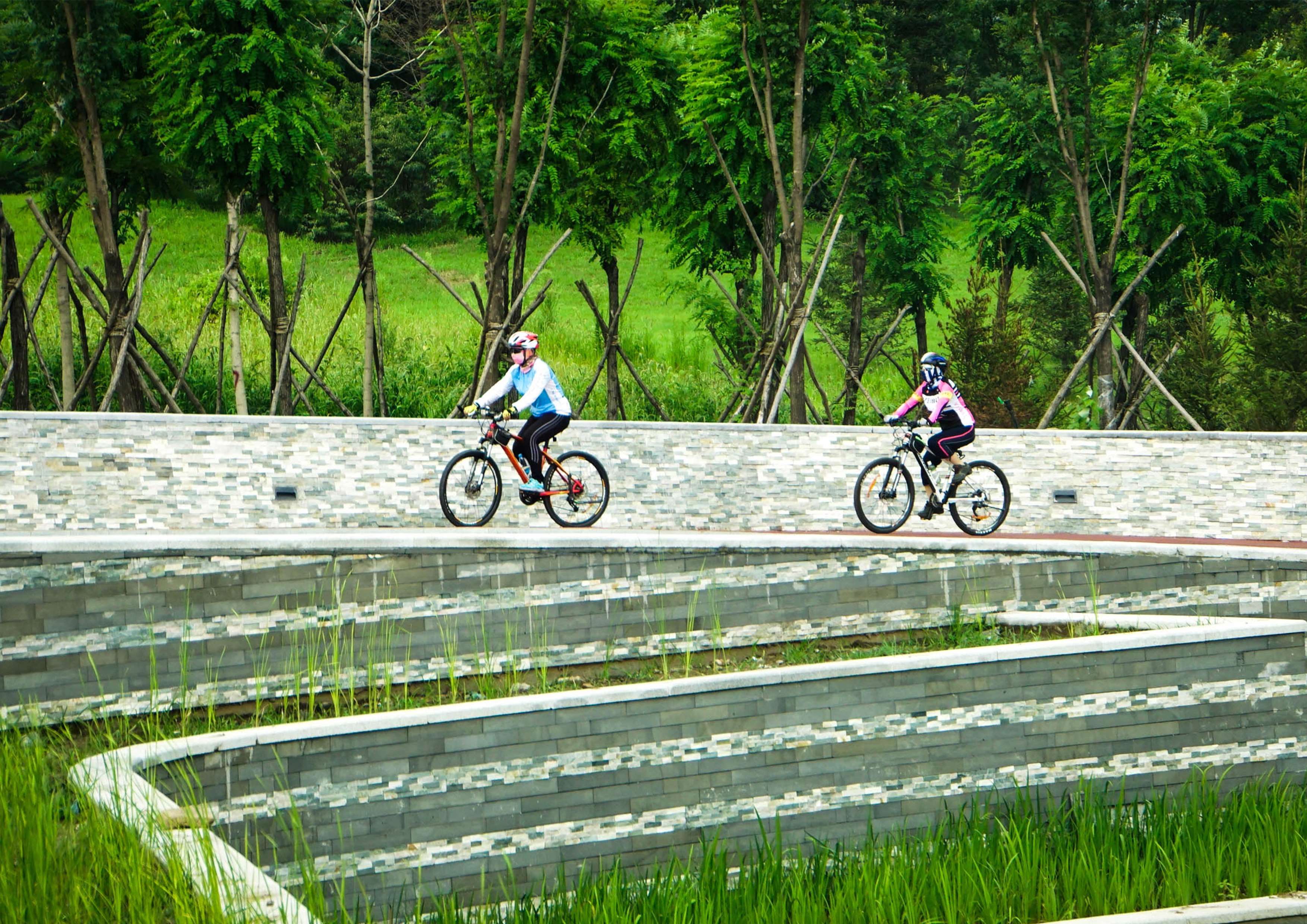
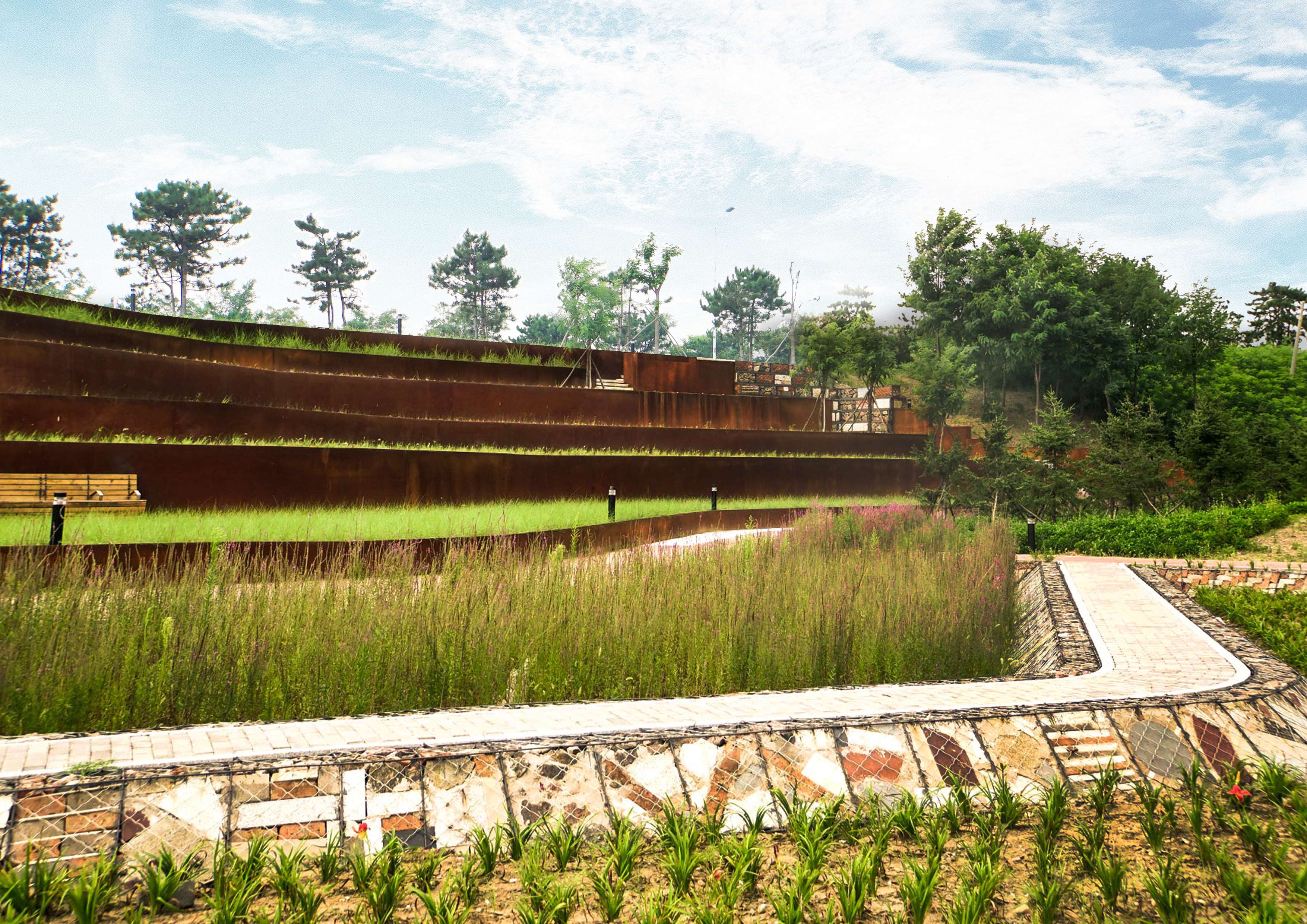
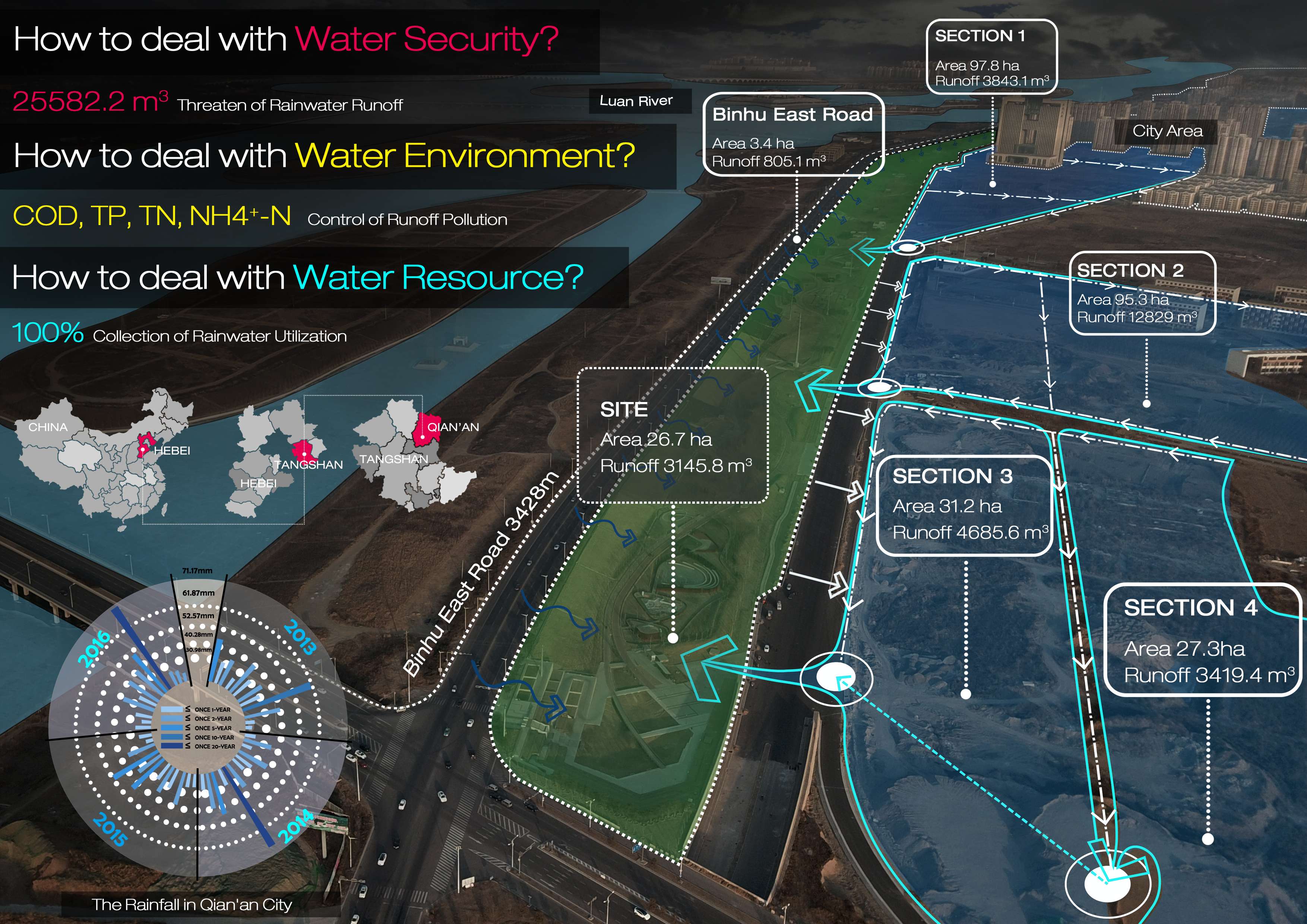
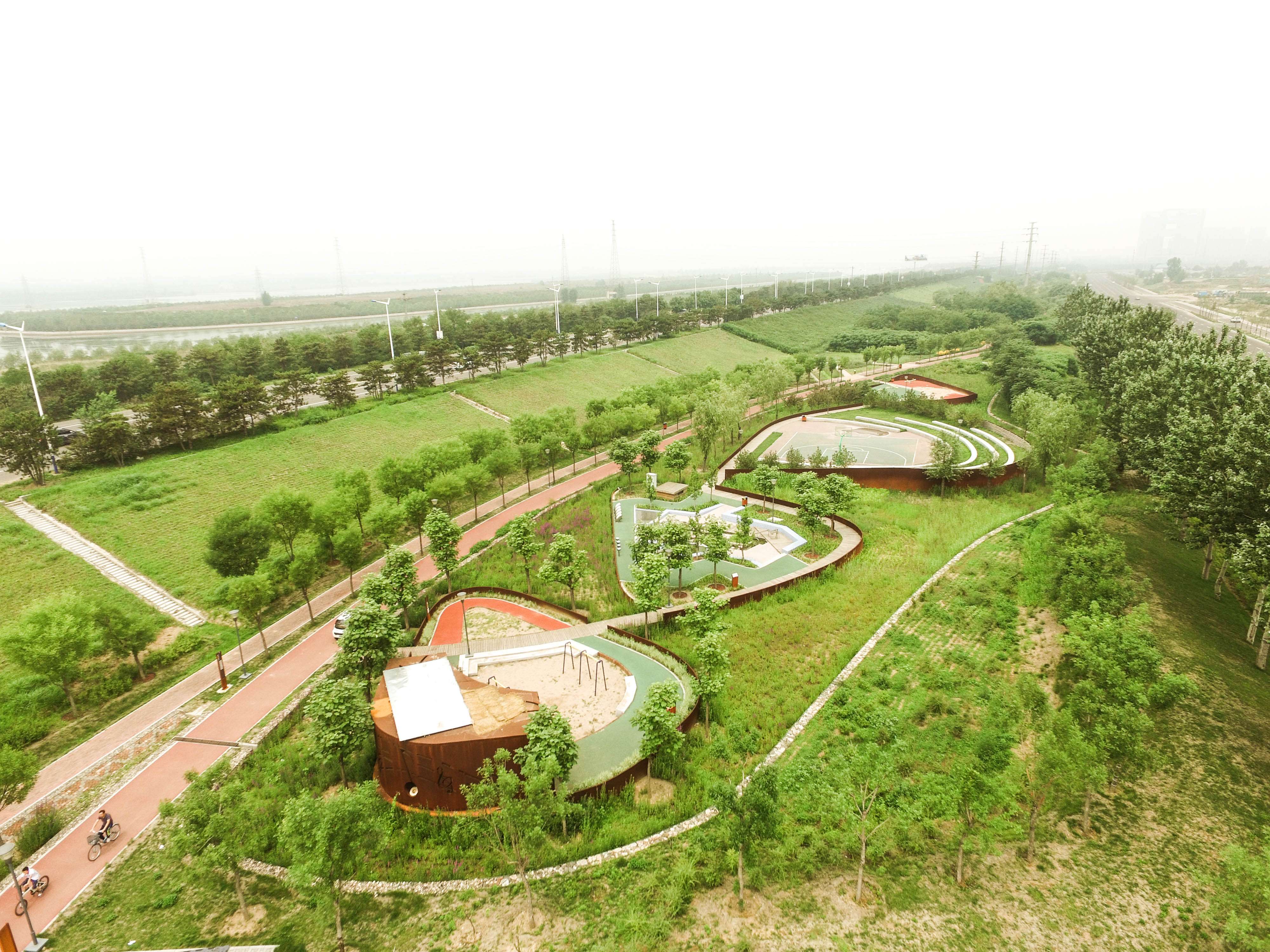
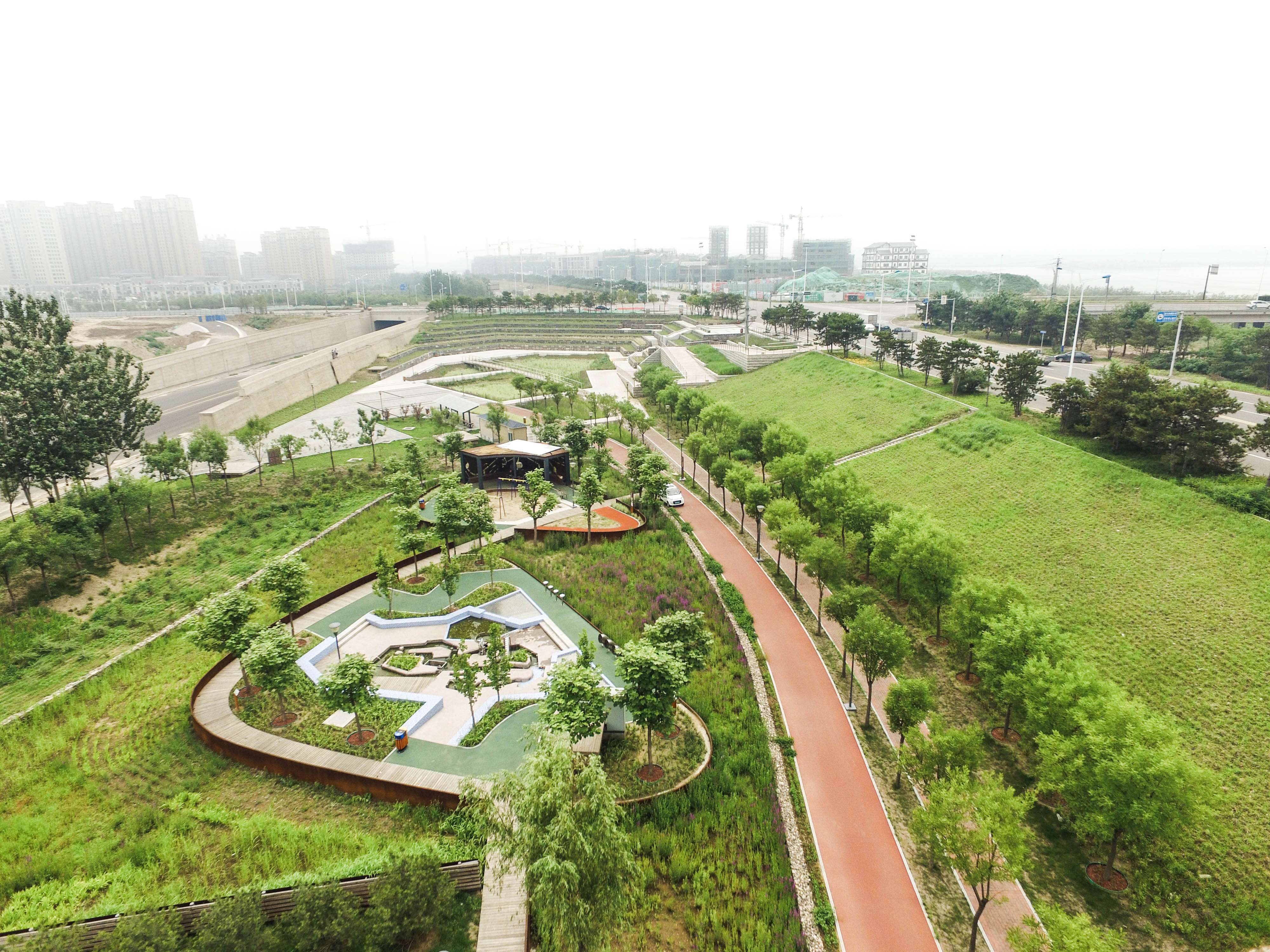
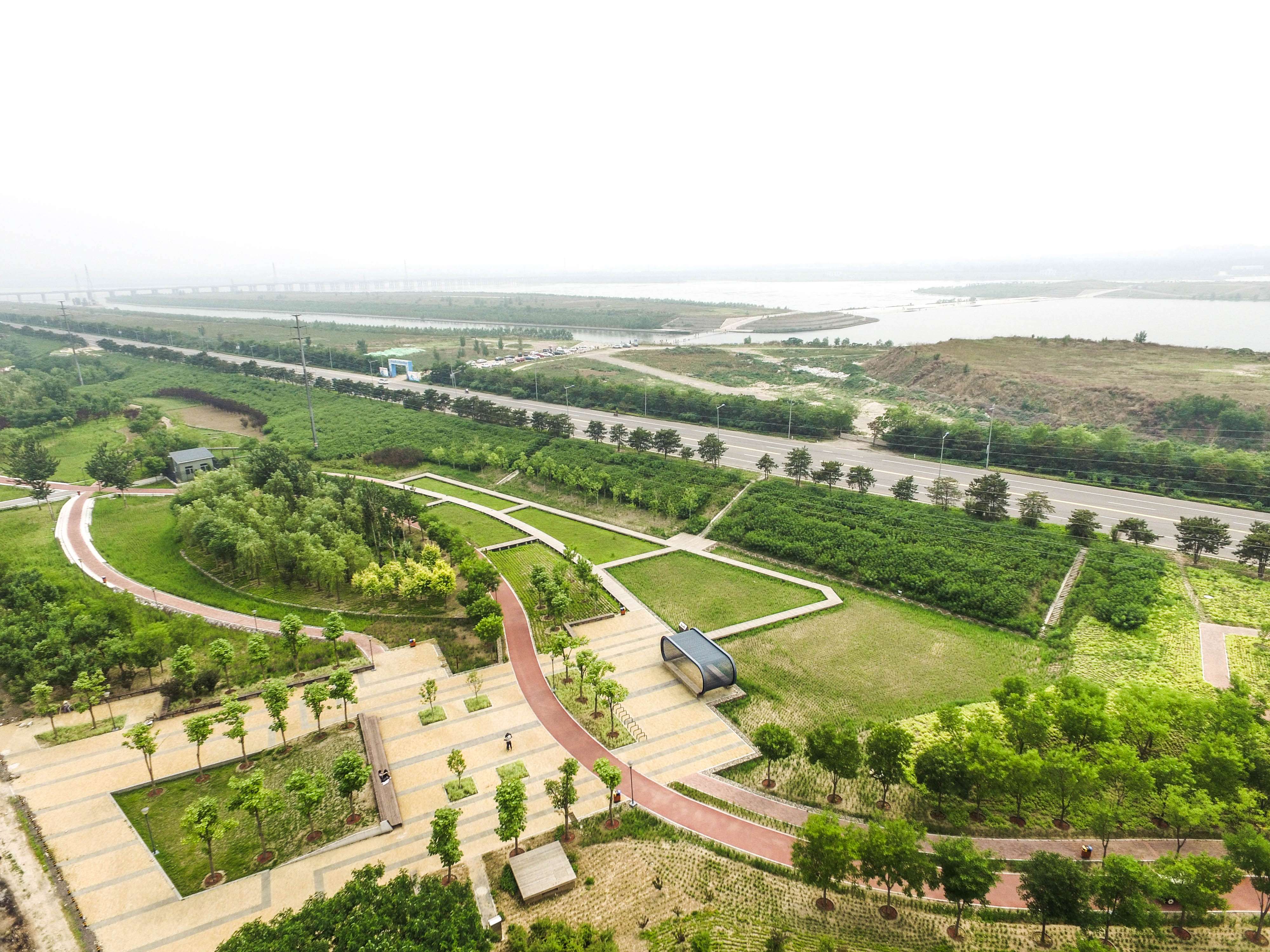
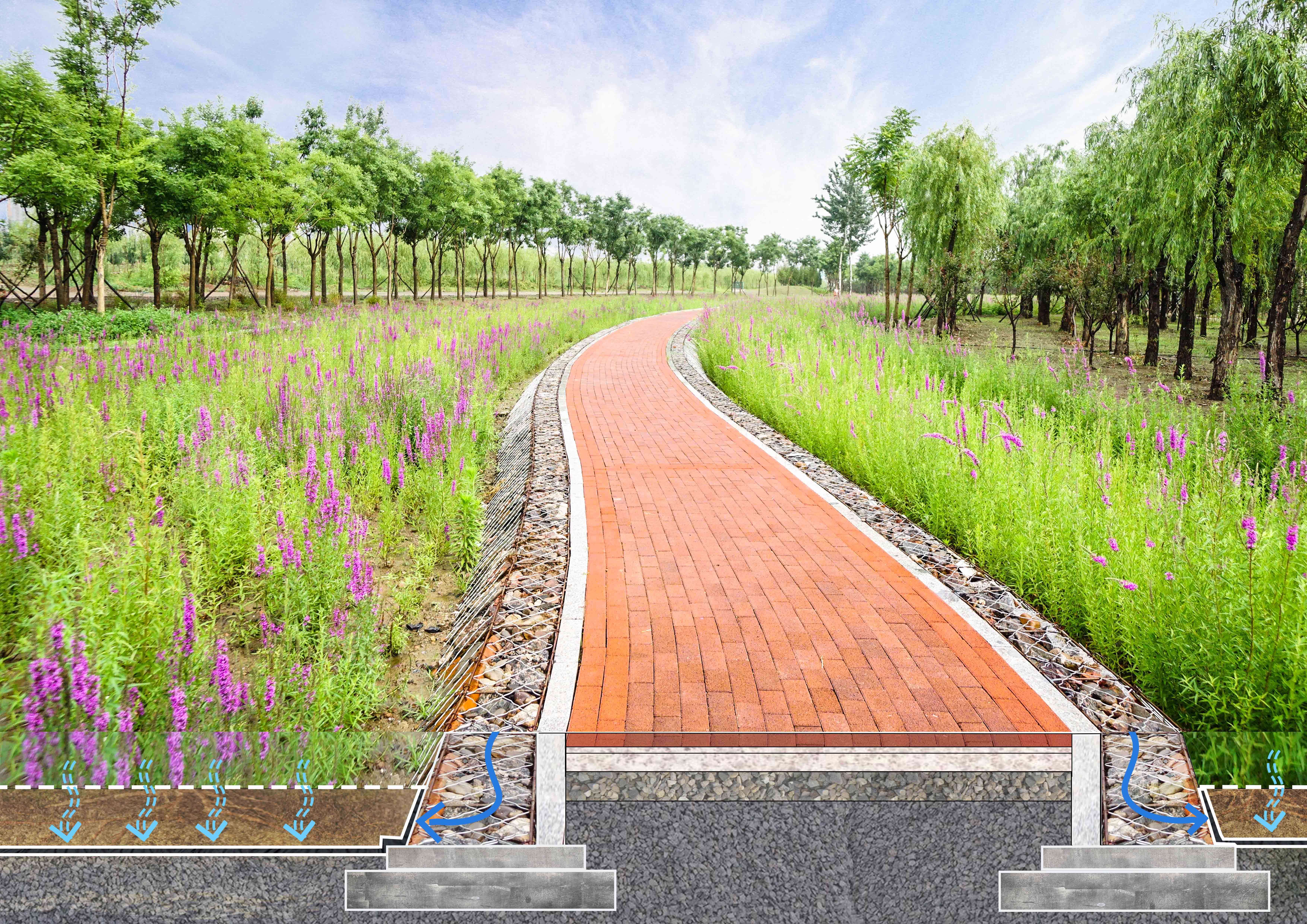
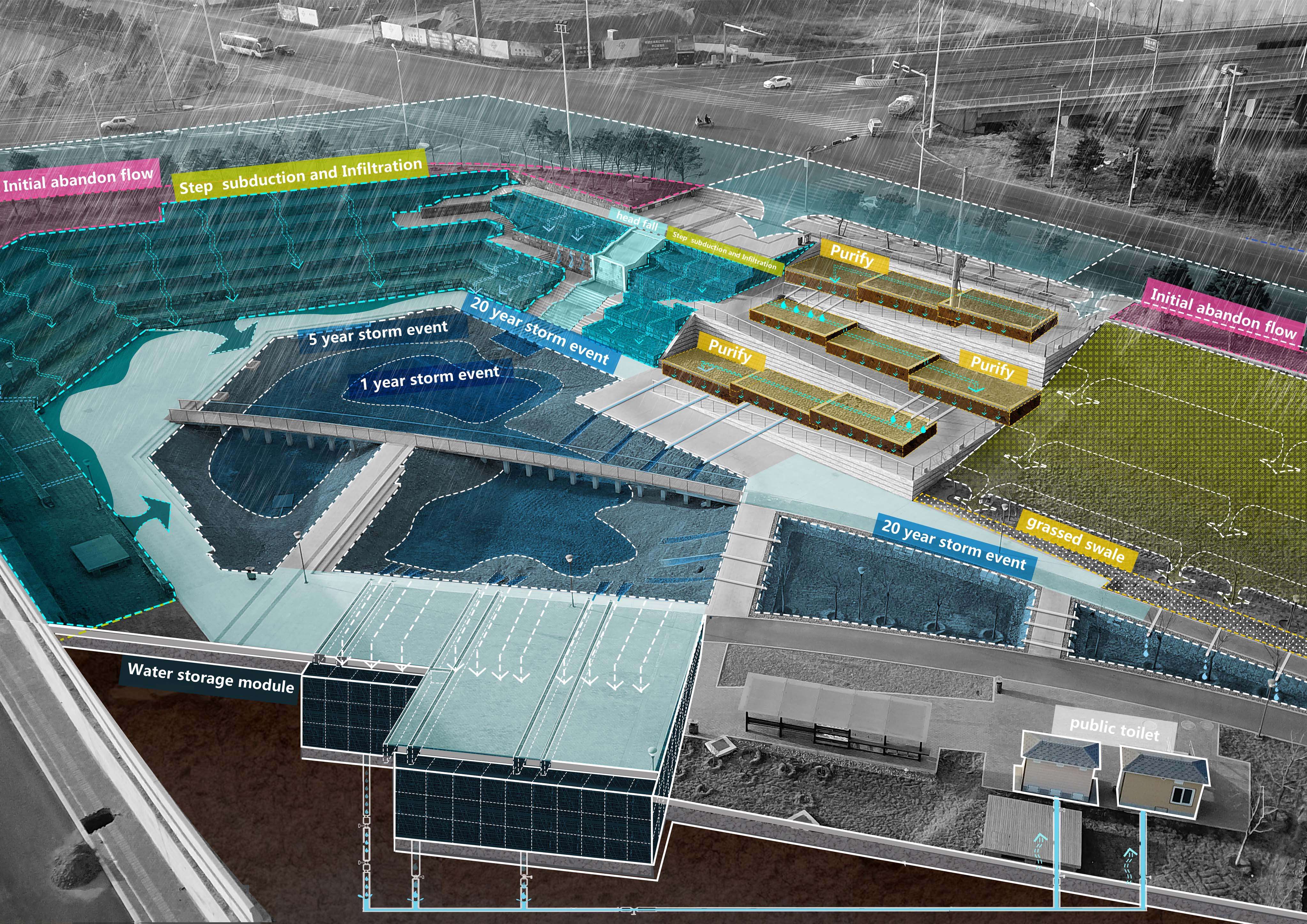

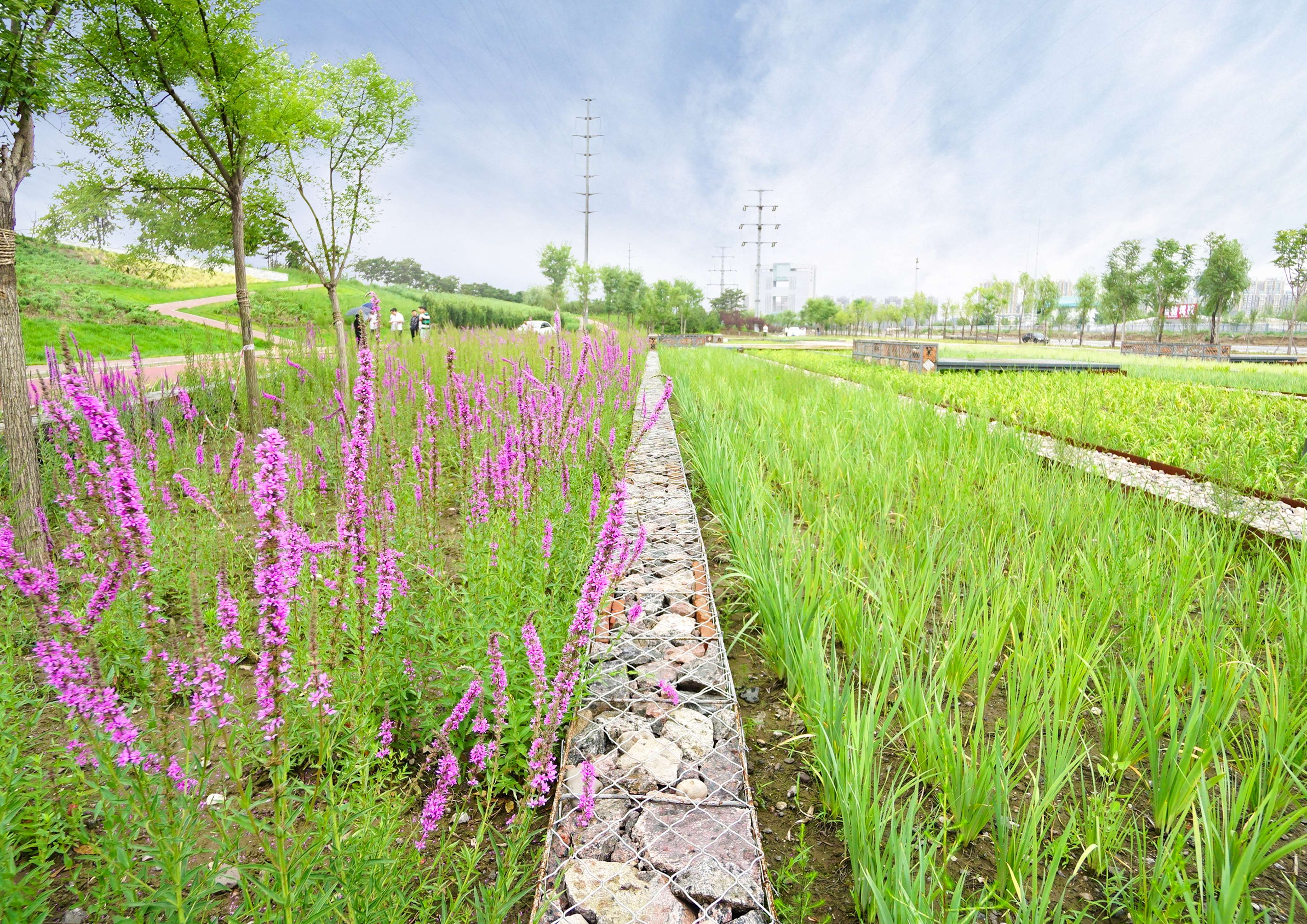
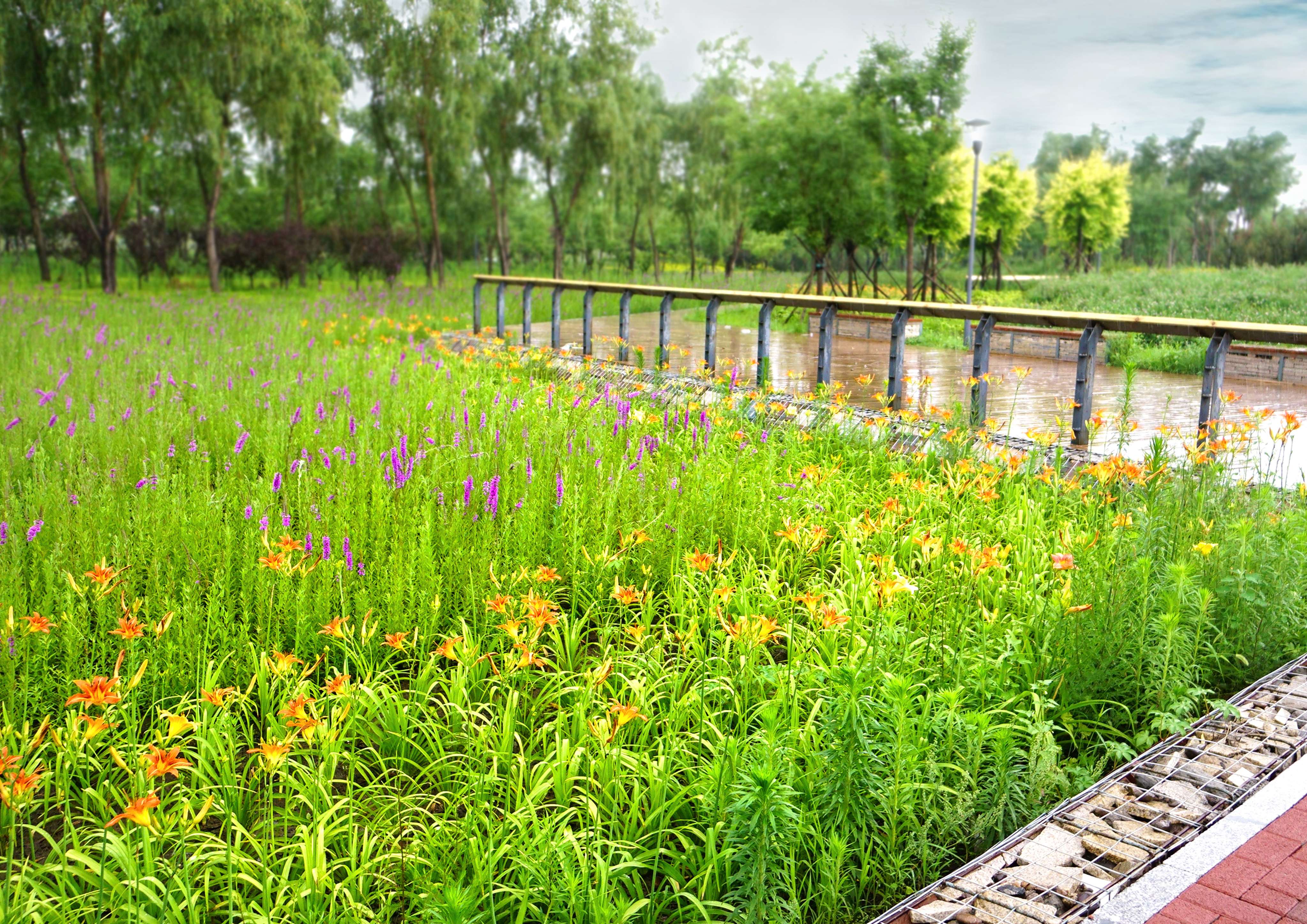
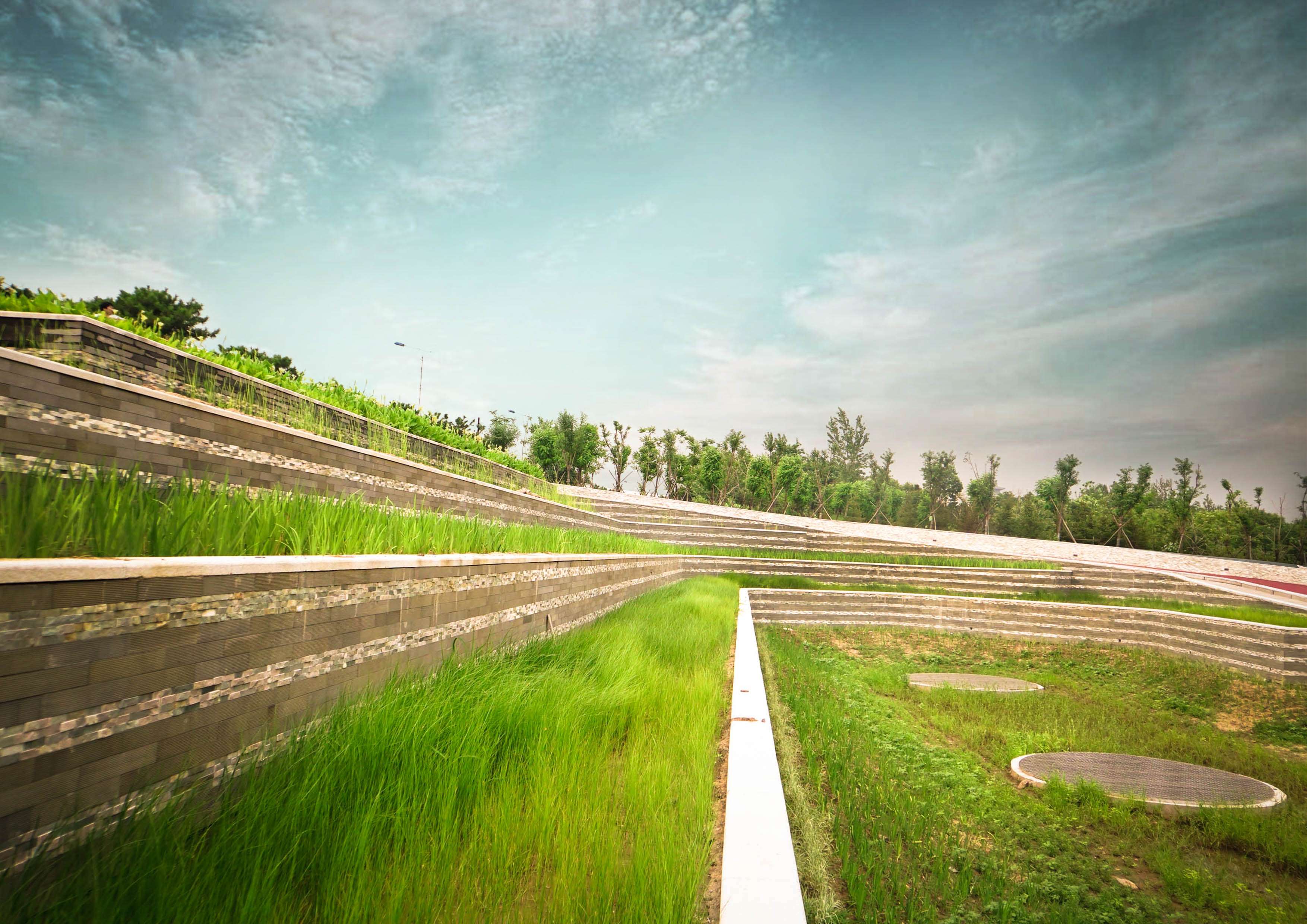
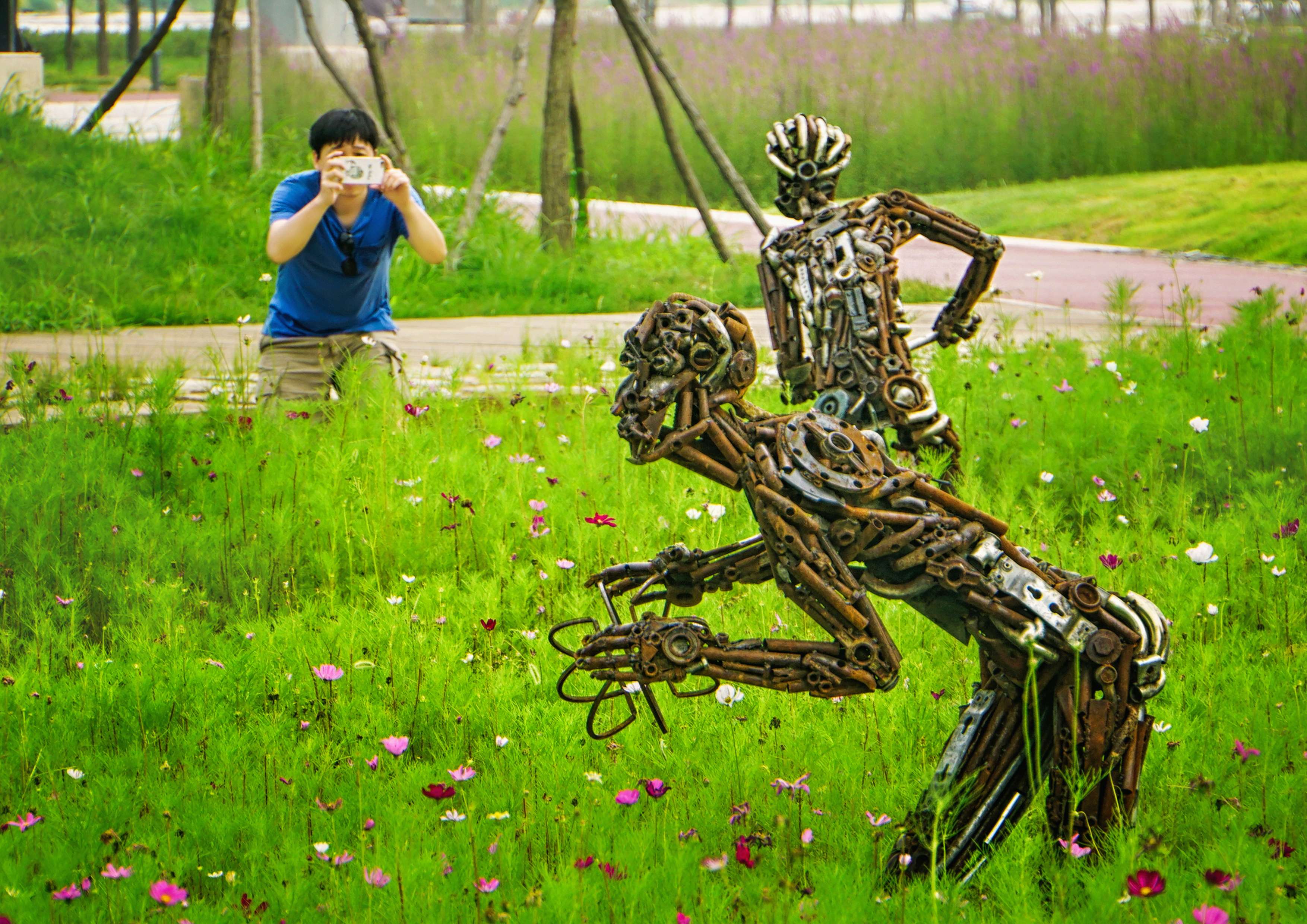
Rainwater Harvesting Greenbelt in Qian’an
Rainwater Harvesting Greenbelt in Qian’an
- Project Statement:
As the first completed greenspace project in Qian’an, which has become the first batch of pilot sponge cities, this is an exceptional project that has responded well to managing the stormwater runoff in the surrounding area. Besides being well designed with resilient infrastructure, the project was combined with landscaping plans, low impact development facilities as well as construction materials which preserved the natural area of the site and thus an outstanding urban open space emerged. Through the interweaving of the blue rain harvesting belt, the red dynamic line and the blue recreation areas, the three-color system has generated various uses as well as created several elastic multi-functional spaces. The value of the project is not only for solving the problem of stormwater runoff around the site of 252ha, but also for solving the problem of lacking the municipal road system and lacking vitality of the site. In the context of rapid urbanization, the project has created a place that balances the relationship between green space, people and urban flood disaster prevention, making it an excellent demonstration.
- Project Narrative:
The rainwater harvesting greenbelt on the east side of Binhu East Road in Qian’an is a dynamic and resilient project. The fusion of rainwater infrastructures and landscape makes the project a high-quality urban open space.
· Problems and Designing Background:
This project covers an area of 26.7 hectares, which takes up the road’s runoff on the west side of the field and other252 hectares of urban runoff. The site was once a derelict land in the central urban district, and by the east of which is a high density residential estate. Stormwater around the site is the essential problem that the project has to face. Tens of thousands of run off need to be reduced here, and the pollution of the runoff from the municipal road will damage the environment of the field. The lack of non-motorized lane on the west side of the city made the area less viable. The long-term abandonment has also made this area less attractive. And the problem of lacking recreational open space in surrounding area residents’ is also a need to be solved.
Qian’an is one of the first batch of pilot sponge cities in China. The project is the first completed greenspace project in Qian’an, which is an exceptional project that has responded well to managing the storm water runoff in the surrounding area. The exploration of this project will provide valuable experiences for the constructions of sponge cities.
Qian’an City is located in the northeast of Hebei Province, 195 kilometers west from Beijing. It is in a warm area with semi-humid monsoon climate. It has the annual average temperature of 11.5 degrees while the annual average rainfall of 711.9 mm. The frost-free period in this city of one year is of 198 days.
· Strategies
The core issue of the site is the threat from stormwater runoff of 252ha. The problems of lacking the municipal road system and lacking vitality of the site are also properly solved by the designers. In order to deal with these problems, three-color system was built to generate various uses as well as create several elastic multi-functional spaces.
1. Blue rain harvesting belt
With 252 hectares of urban runoff from the surrounding area merging into the site, the security of the site could not be guaranteed. The pollution of urban run-off also brings water pollution to the site. The goal of saving clean water has brought the requirement for rainwater reusing.
1) Water security - Rainwater infiltration:
The original soil of the site is natural grade sand, so the permeability of the site can reduce a large amount of runoff. More than one third of the site was designed to be rainwater garden, sunken green space and other infiltration facilities. The rainwater infiltration system is a north-south planting belt throughout the site continuously. It can reduce the runoff while strengthen the embodiment of plant landscape.
2) Water Resources - Rainwater harvesting:
In order to reuse as much rain as possible to irrigate plants, designers set up six reservoirs and four water storage modules in the site for rainwater collection at where municipal stormwater pipes docking in. A total of 5034m³ of rain water can be stored. The collected rainwater can be used for park flushing and plant irrigation, saving more than 27,000 US dollars of water bills each year.
3) Water environment - Rainwater purification:
In order to prevent the soil polluted by runoff, four platform-types gravel vegetation beds were set up inside the site. The rainwater will have to through layers of purification before entering the storages, in order to ensure the quality of runoff within the site.
4) Water landscape - Rain landscape:
The water reduction system is set throughout the park, and forms a 0.5-1m height difference with the surrounding pavement. The designer used Gordon Steel and gabion with construction waste to handle the height difference, forming a strong, beautiful, unified and rich texture of the design elements.
2.Red dynamic line:
For the lack of non-motorized lane in the Municipal Road in the west of the site, designers put a slow-lane system that runs through the whole field. The system can allow both bicycles and pedestrians, and connect various types of urban land that are separated from each other. So that residents can have a safer, prettier environment.
3.Green Recreation Areas:
More than 90% of trees in the site have been preserved. Over 80% of the site is covered by plants, providing green space for citizens' recreation activities. In order to energizing the site, designers have set up various kinds of open space for residents of all ages to make up for the high-density neighborhoods.
Through the interweaving of the blue rain harvesting belt, the red dynamic line and the blue recreation areas, the three-color system has generated various uses as well as created several elastic multi-functional spaces.
- Value
· Rainwater management capabilities
More than 80% of annual runoff has been reduced by the rainwater management measures, while more than 85% contaminants of runoff have been purified. The annual consumption of clean water sources have been reduced by 37,755 cubic meters. Rainwater has become a part of the landscape and clean resource instead being a threat. Due to the powerful rain-harvesting capabilities here, the living quality of thousands of families in 252 hectares around the site has been greatly improved, who are no longer threatened by stormwater.
1)Runoff reduction
According to the SWMM’s simulation results of reducing external runoff, the program could totally solve the 21600m³ external runoff in the condition of once in a year rainfall reappearing period. In the condition of once in 2 years rainfall reappearing period, the program could solve 88.42% of the 29380m³ external runoff. In the condition of once in 5 years rainfall reappearing period, the program could solve 57.83% of the 40490m³ external runoff. In the condition of once in 10 years rainfall reappearing period, the program could solve 45.64% of the 49280m³ external runoff. In the condition of once in 20 years rainfall reappearing period, the program could solve 37.69% of the 58280m³ external runoff.
2) Postpone peak hours
According to the SWMM’s simulation results of postpone peak hours. the peak flow reduction rate is 100% in the condition of once in a year rainfall reappearing period. In the condition of once in 2 years rainfall reappearing period, the delay time of the peak is 135mins and the peak flow reduction rate is 87.41%. In the condition of once in 5 years rainfall reappearing period, the delay time is 46mins and the peak flow reduction rate is 60.32%. In the condition of once in 10 years rainfall reappearing period, the delay time is 30mins and the peak flow reduction rate is 48.34%. In the condition of once in 20 years rainfall reappearing period, the delay time is 24mins and the peak flow reduction rate is 40.55%.
3) Pollutants reduction
According to the SWMM’s simulation results of pollutants reduction, the water quality could be greatly improved. The runoff pollution reduction rate of SS, TP,COD,TN are respectively 92.6%,89.7%,88.4% 90.2%。
· Social Sustainability
More than 100 billboards were set to promote the concept and technology of flood management, which made the site has significant science demonstration. Over 4,000 waste materials are collected as construction materials for the park and the memory of the site is preserved forever as well. The slow-lane system in the park has ensured the safety of residents', and complemented the infrastructure functions of Binhu East Road. Furthermore, the various recreation spaces have made it a paradise for the high-density residential area.
· Construction demonstration
The project has created a place that integrates function, landscape, and rainflood management together, which makes it an excellent demonstration. Rainwater management can be integrated into a green space under the condition that the basic requirements of ecology, recreation space and landscape are satisfied. It can achieve a good balance of functionality and landscape at the same time. The project also demonstrates that rain management system also could have good landscape.
